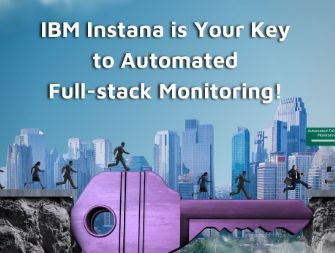August 2025 – Santa Clara, California
Supply chains are no longer back-office functions hidden behind warehouse walls. In 2025, they are high-tech ecosystems where AI, IoT, and sustainability platforms converge to deliver speed, transparency, and resilience. Looking ahead to 2026, the winning supply chains will be those that combine agility with accountability — powered by innovations that not only cut costs but also build trust.
1. AI-Driven Predictive and Autonomous Supply Chains
In an era of unpredictable demand, geopolitical uncertainty, and climate disruptions, artificial intelligence (AI) is taking supply chains from reactive firefighting to proactive orchestration.
-
Predictive Analytics: Advanced AI models ingest historical data, real-time sensor inputs, and external signals (weather patterns, social media sentiment, economic indicators) to forecast demand spikes, supplier delays, and transportation bottlenecks.
-
Autonomous Decision-Making: AI systems are now capable of automatically rerouting shipments, adjusting supplier orders, and even reconfiguring production schedules without human intervention.
-
Impact: Companies can cut lead times, reduce safety stock, and lower logistics costs, all while improving service levels.
Example: DHL Supply Chain uses AI-powered digital twins to simulate global logistics networks, running “what-if” scenarios to prepare for port strikes, fuel price surges, or extreme weather events before they happen (DHL, 2025).
2. Real-Time Visibility Through IoT and Blockchain
The modern supply chain is a complex web of suppliers, carriers, and distribution hubs. Without real-time data, blind spots emerge — and those blind spots are costly.
-
IoT Sensors: Low-power tracking devices monitor shipment location, temperature, humidity, and shock exposure from origin to destination.
-
Blockchain Integration: Immutable digital ledgers document each handoff and environmental condition, creating verifiable product histories. This boosts compliance, especially in industries with strict regulations like pharmaceuticals and food.
-
Impact: Enables instant traceability, speeds up recalls, and reduces counterfeit risk.
Example: Walmart’s blockchain-enabled produce tracking now traces leafy greens from farm to shelf in under three seconds, down from the industry average of nearly seven days (Walmart, 2025).
3. Sustainable and Resilient Supply Chain Platforms
Sustainability is no longer a “corporate social responsibility” bullet point — it’s a measurable performance metric. Investors, regulators, and customers are demanding proof.
-
Carbon Tracking: ESG dashboards, integrated into supply chain management (SCM) systems, track emissions at every stage — from raw materials to last-mile delivery.
-
Circular Supply Chains: Platforms support refurbishment, resale, and recycling, turning waste into revenue streams.
-
Resilience Modeling: Cloud-based tools simulate global disruptions — from climate events to supplier bankruptcies — and generate optimized contingency plans.
-
Impact: Aligns supply chains with corporate ESG targets while reducing operational risk.
Example: Unilever uses AI-enhanced sustainability platforms to optimize sourcing decisions for both cost and carbon footprint, improving supply resilience and brand perception simultaneously (Unilever, 2025).
4. Sector-Specific Implications
-
Retail: Demand forecasting powered by AI is helping retailers avoid overstocking seasonal goods while still meeting unpredictable surges.
-
Pharma & Healthcare: IoT-enabled cold chains ensure temperature-sensitive drugs and vaccines remain viable, even during transit delays.
-
Manufacturing: Just-in-time production is evolving into just-in-case strategies, with AI balancing cost efficiency against resilience.
-
Agriculture: Blockchain-enabled farm-to-table traceability improves food safety and satisfies growing consumer demand for transparency.
5. What to Expect in 2026
We expect three major developments over the next 18 months:
-
Autonomous Logistics Hubs: AI-controlled distribution centers will dynamically assign human and robotic labor, adjust packing sequences, and optimize outbound routing in real time.
-
AI-Powered Supplier Scorecards: Continuous monitoring of suppliers for ESG compliance, delivery reliability, and cost performance will replace periodic audits.
-
Edge Computing in Supply Chains: Localized AI processing at ports, warehouses, and factories will cut latency for critical decisions like rerouting shipments around bottlenecks.
6. Challenges to Overcome
-
Data Silos: Without integration, IoT and AI outputs remain underutilized.
-
Cybersecurity Risks: Increased connectivity means more potential attack vectors — especially with blockchain and IoT endpoints.
-
Change Management: Employees must adapt to AI-assisted decision-making without losing oversight or accountability.
Closing Thought
Supply chains are evolving into intelligent, transparent, and sustainable ecosystems. By late 2026, “supply chain management” will be less about managing and more about orchestrating — balancing speed, resilience, and responsibility.
The organizations that invest now in AI, IoT, blockchain, and sustainability will not only survive the next disruption — they’ll turn it into a competitive advantage.
References
-
DHL. (2025). AI and Digital Twin Integration in Supply Chains. Retrieved from https://www.dhl.com
-
Walmart. (2025). Blockchain Produce Traceability Program. Retrieved from https://corporate.walmart.com
-
Unilever. (2025). Sustainable Sourcing Report 2025. Retrieved from https://www.unilever.com
-
Gartner. (2025). Supply Chain Technology Trends 2025–2026. Retrieved from https://www.gartner.com
Samantha Cohen – Co-Editor
Dallas, Texas
Peter Jonathan Wilcheck – Co-Editor
Miami, Florida
Jean Pelletier – Co-Editor
Montreal, Quebec
Post Disclaimer
The information provided in our posts or blogs are for educational and informative purposes only. We do not guarantee the accuracy, completeness or suitability of the information. We do not provide financial or investment advice. Readers should always seek professional advice before making any financial or investment decisions based on the information provided in our content. We will not be held responsible for any losses, damages or consequences that may arise from relying on the information provided in our content.



